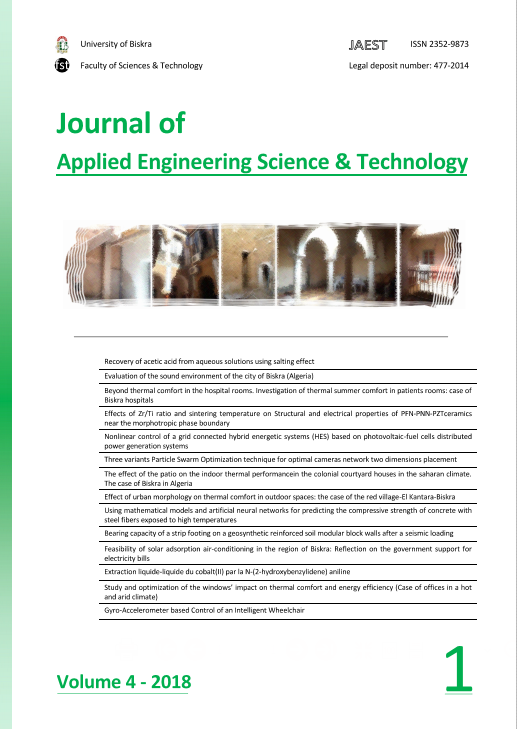Nonlinear control of a grid connected hybrid energetic systems (HES) based on photovoltaic- fuel cells distributed power generation systems
DOI:
https://doi.org/10.69717/jaest.v4.i1.55Keywords:
Hybrid Energetic Systems (HES), Solid Oxide Fuel Cell (SOFC), Photovoltaic (PV), Sliding Mode Control, Maximum Power Point Tracking, Grid power managementAbstract
This paper presents a discrete-time integral sliding mode control for a grid connectedhybrid energetic systems (HES) based on photovoltaic-Solid oxide fuel cell (SOFC) for distributedpower generation systems. The proposed HES systems employ solid oxide fuel cell (SOFC) andphotovoltaic panels as main sources, supercapacitors as complementary sources, and controlledDC-DC boost converter and three levels NPC inverter. A maximum power point tracking (MPPT)control is used in order to maximize the power of the photovoltaic system. The proposed controlconsists of a power management grid interface inverter transferring the energy from the hybridsources into the grid by controlling the main utility grid and the common DC voltage active andreactive power. The obtained simulation results show the effectiveness and robustness of theproposed control strategy. Keywords: Hybrid Energetic Systems (HES), Solid Oxide Fuel Cell (SOFC),Photovoltaic (PV), Sliding Mode Control, Maximum Power Point Tracking (MPPT), Grid powermanagement.
Downloads
Downloads
Published
Issue
Section
License

This work is licensed under a Creative Commons Attribution-NonCommercial 4.0 International License.













